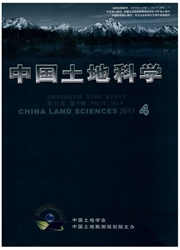

 中文摘要:
中文摘要:
土壤侵蚀是制约黄土高原可持续发展的瓶颈因素,为分析不同面积流域降雨和土地利用格局对土壤侵蚀影响的变化趋势,本文基于土壤侵蚀评价指数,发展了降雨和土地利用格局对土壤侵蚀影响的表征方法,探讨了多流域降雨和土地利用格局对土壤侵蚀的影响。结果表明:①2006-2012年,研究区降雨侵蚀力因子月总体上呈现上升的趋势,植被覆盖与管理因子C呈现下降趋势;②随流域面积的增加,研究区内降雨格局对土壤侵蚀的影响逐渐降低,而土地利用格局对土壤侵蚀的影响变大;③在流域面积较小时,降雨格局对土壤侵蚀的影响要大于土地利用格局对土壤侵蚀的影响,而在流域面积较大时,土地利用格局对土壤侵蚀的影响大于降雨格局对土壤侵蚀的影响;④随着流域面积的增加,研究区的林地比例有所下降,陡坡植被覆盖类型趋于单一,这是在流域面积增大时土地利用格局对土壤侵蚀影响增加的主要原因。同时,流域面积较小时,降雨对土壤侵蚀的影响较大,但随着流域面积的增加,松软的土壤性质和沟壑纵横的地形增大了发生重力侵蚀的可能性,土壤和地形对土壤侵蚀的影响增大。
 英文摘要:
英文摘要:
Soil erosion has become one of global environmental problems, especially in the Loess Plateau. Controlling soil erosion is of great significance to improve the ecosystem, and protect the ecological security and maintain the harmonious relationship between human beings and nature. We compare the effect of rainfall pattern and land use pattern on soil erosion in different watersheds to improve soil erosion models. Currently, the effect of rainfall and land use on soil erosion is the hot research topics. However, most of the studies are aimed at one single study area, and there is less comparative analysis of rainfall and land use pattern on soil erosion in different-scale watersheds. The neglect of comparative analysis of the effect of rainfall pattern and land use pattern on soil erosion would inevitably influence the further study of the mechanism of soil erosion. And it would affect the simulation accuracy of soil erosion models. The investigation of the effect of land use pattern and rainfall pattern on soil erosion would have great significance to soil erosion research and comprehensive governance of soil erosion problems. With reference to the concept of soil erosion evaluation index, this paper proposed the use of rainfall pattern index and land use pattern index for predicting soil erosion in different watersheds. Otherwise, this paper identified more important factors for soil erosion between rainfall patterns and land use pattern in different-scale watersheds. It has positive significance for carrying out the comprehensive management of soil erosion and land use pattern optimization design. The study areas of this paper are Qingjian River basin, Fenchuan River Basin, Yanhe River Basin and Dali River Basin. The main results are as follows. (1) From 2006 to 2012, the rainfall erosivity factor R in the study area showed an upward trend, while the vegetation cover and management factor C showed a downward trend. (2) When watershed area was small, the effect of rainfall pattern was greater than that of
 同期刊论文项目
同期刊论文项目
 同项目期刊论文
同项目期刊论文
 期刊信息
期刊信息
